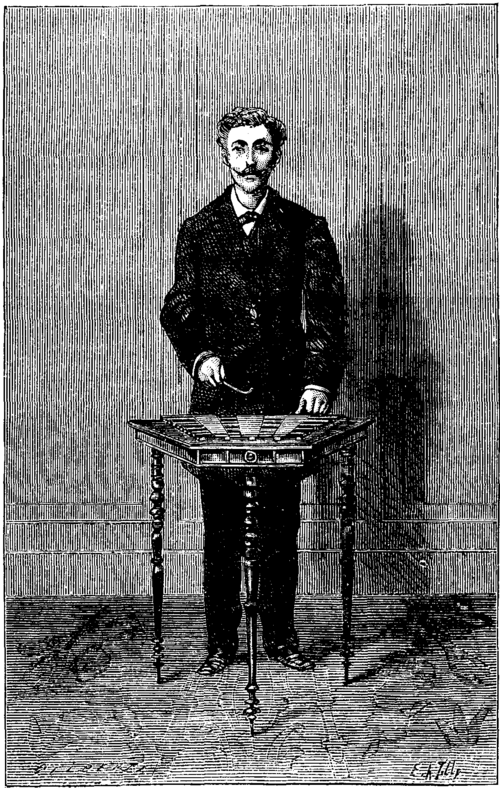The Xylophone
Description
This section is from "Scientific American Supplement". Also available from Amazon: Scientific American Reference Book.
The Xylophone
Like most musical instruments, the xylophone, had its origin in very remote times. The Hebrews and Greeks had instruments from which the one of to-day was derived, although the latter has naturally undergone many transformations. Along about 1742 we find it widely in use in Sicily under the name of Xylonganum. The Russians, Cossacks, and Tartars, and especially the mountain population of the Carpathians and Ural, played much upon an instrument of the same nature that they called Diereva and Saloma.

Fig. 1. - METHOD OF PLAYING UPON THE XYLOPHONE.
It appears that the xylophone was played in Germany as early as the beginning of the 16th century. After this epoch it was in use for quite a long period, but gradually fell into oblivion until the beginning of the present century. It was toward 1830 that the celebrated Russian Gussikow undertook a grand artistic voyage through Europe, and gained a certain renown and received many honors due to his truly original productions. Gussikow possessed a remarkable technique that permitted the musical instrument which he brought into fashion to be appreciated for all its worth.

Fig. 2. - PLAN VIEW OF THE XYLOPHONE.
As the name, "instrument of wood and straw," indicates, the xylophone (which Fig. 1 shows the mode of using) consists of small pieces of wood of varying length, and narrow or wide according to the tone that it is desired to get from them. These pieces of wood are connected with each other by cords so as to form a triangular figure (Fig. 2) that may be managed without fear of displacing the parts. The whole is laid upon bands of straw designed to bring out the sounds and render them stronger and purer. The sounds are produced by striking the pieces of wood with a couple of small hammers. They are short and jerky, and, as they cannot be prolonged, nothing but pieces possessing a quick rhythm can be executed upon the instrument. Dances, marches, variations, etc., are played upon it by preference, and with the best effect.
The popularity of this instrument is making rapid progress, and it is beginning to be played in orchestras in France [as it has been in America for many years]. A method of using it has just been published, as well as pieces of music adapted to it, with piano, violin, orchestra, etc., accompaniment.
Continue to:


